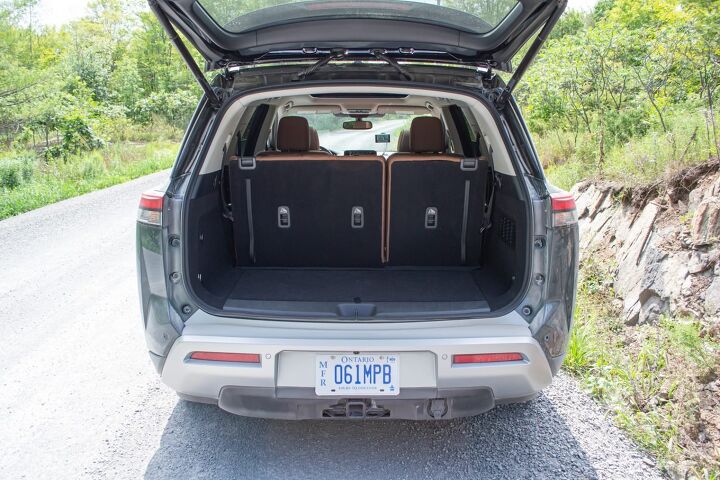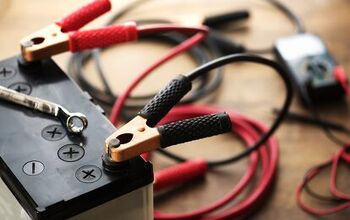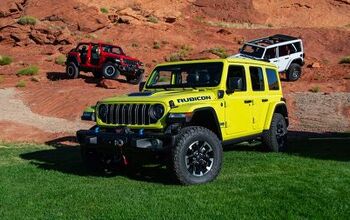Nissan Pathfinder Vs Subaru Ascent: Which SUV is Right for You?


The big three-row SUV continues to be the vehicle of choice for growing families.
Technically crossovers, these mid-size vehicles offer seating for 6 to 8 passengers along with enough cargo capacity for long road trips. With all-wheel drive and generous ground clearance, they’re sure-footed driving conveyances that can take a large family off the beaten path in a variety of weather conditions. Best of all, they are generally very easy to drive and user friendly.
This sounds like the perfect market segment for Subaru to produce a vehicle and after the mis-steps of the previous Tribeca, the Japanese brand nailed the formula with the Ascent. Available in 7 or 8 seat configurations, it comes standard with all-wheel drive and a turbocharged BOXER engine.
Get a Quote on a New Nissan Pathfinder or Subaru AscentNissan has been present in this space for quite sometime with the brand’s high-selling Pathfinder. All-new this year, the Pathfinder enters its fifth generation of existence. It takes the proven formula of offering families what they want, combined with a more rugged appearance. To see how the new model matches up with the Subaru Ascent, read on.
Cabin Space

Pathfinder: Legroom in the Pathfinder is quite good for front seat passengers at 44.3 inches (1,126 mm). Second row occupants receive 35.5 inches (902 m) while rear seat passengers have a scant 28 inches (712 mm).
The Nissan’s headroom is listed at 42.3-inches (1,075 mm) for front seat passengers, or 41.1 inches (1,046 mm) with the optional moonroof. The second row features 39.6 inches (1,008) of headroom without the moonroof or 38.4 inches (976) with it equipped. Finally, third row occupants have 37.8 inches (961 mm) of headroom regardless of which roof is installed.

Ascent: The Subaru Ascent offers up 41.3 inches (1,049 mm) of headroom for front seat passengers. Those in the second row get 40.0 inches of headroom (1,016 mm) and the third row has 36.3 inches (922 mm). But with the Ascent’s optional panoramic sunroof, headroom decreases for those in the front to 40.1 inches (1,019 mm) and 38.7 inches (983 mm) in the second row. The third-row headroom remains the same at 36.3 inches (922 mm).
SEE ALSO: Subaru Ascent vs Subaru Outback: Which Crossover Is Right for You?The Subaru’s legroom up front isn’t quite as large as the Nissan’s at 42.2 inches (1,072 mm). But the Ascent’s second and third row legroom trumps the Pathfinders at 38.6 inches (980 mm) and 31.7 inches (805 mm) respectively.
Bottom Line: The Nissan Pathfinder has a more spacious front seat area while the Subaru Ascent offers those in the second row more room. The third row is a wash as the Pathfinder has more headroom while the Ascent features greater legroom. This category is a tie.
Cargo Space and Towing

Pathfinder: Behind the third row of the Pathfinder there is 16.6 cu ft. (470 L) of cargo capacity. Fold the third row down and space increases to a useful 45 cubic feet (1,274 L). The maximum amount of cargo capacity possible with the second row folded flat is 80.5 cubic feet (2,280 L).
The Pathfinder is one of the highest rated vehicles in its segment when it comes to towing with an official rating of 6,000 lbs. (2,722 kg) when properly equipped. Front-wheel drive models are still capable of towing upwards of 3,500 lbs. (1,588 kg) as well.

Ascent: Subaru lists the Ascent’s maximum cargo capacity at 86.5 cubic feet (2,449L) behind the front-row seats, besting the Pathfinder. With the second and third rows folded upright, it’s the same story. Behind the second-row seats is 47.5 cubic feet (1,345L) of cargo space, and with all three rows of seats in place, there’s still 17.8 cubic feet (504L) behind the third row.
Most versions of the Subaru Ascent will tow as much as 5,000 lbs (2,268 kg) when properly equipped with only the entry level limited to a 2,000 lbs (907 kg) of towing capacity.
Bottom Line: If carrying more gear inside the vehicle is needed, the Subaru Ascent holds the advantage. But if a larger trailer is needed to be towed, then the Pathfinder is the better choice. Once again, we have a draw in this category.
Technology and Features

Pathfinder: The Pathfinder S is the vehicle’s base trim level and comes equipped with a tri-zone climate control, 18-inch alloy wheels, and push-button start. Also included are LED headlights, manual front cloth seats, and a 8-inch infotainment system. Step up to the Pathfinder SV and heated front seats, a power driver’s seat, remote engine start, and Sirius XM satellite radio are added. The SV Convenience packages includes the towing package, power lift gate and panoramic sunroof.
SEE ALSO: Nissan Pathfinder vs Volkswagen Atlas ComparisonNext up is the SL trim that includes leather seats, a heated steering wheel, LED fog lights, a 9-inch infotainment system, power lift gate, rear sunshades, and power passenger seat. The SL trim can be had with a Premium Package that adds 20-inch alloy wheels, the tow package, and an upgraded stereo system.
The Top of the line trim is called the Pathfinder Platinum and adds 20-inch wheels, a panoramic sunroof, wireless phone charger, tow package, and an upgraded sound system.

Ascent: The entry level Ascent comes equipped with manual front seats, three-zone climate control, cloth upholstery, a power tailgate, 18-inch alloy wheels, a 6.5-inch infotainment display, and LED headlights.
Step up to the Premium trim and a power driver’s seat, a front wiper de-icer, heated front seats, rear-seat HVAC controls and an 8.0-inch infotainment display are added. There is also the Premium Convenience option package that includes an auto-dimming rearview mirror, and reverse automatic braking. The Sport package adds a panoramic sunroof and navigation.
The Limited trim upgrades the front passenger seat to include power, adds a heated steering wheel as well as heated rear seats, and includes 20-inch wheels. It also includes leather upholstery and passive keyless entry. A Limited Sport package upgrades the sounds system and includes the panoramic sunroof as well as navigation.
The top trim Touring model brings ventilated front seats, navigation, and a camera-based rearview mirror.
Bottom Line: As entry level models, both the Ascent and Pathfinder come nearly identically equipped. The story doesn’t change much as the vehicles progress up through the various trim levels. The Pathfinder does hold a slim advantage as far as features go offering the larger infotainment screens and the optional around view camera system.
Powertrains

Pathfinder: All versions of the Pathfinder continue to use a 3.5 liter V6 engine that now makes 284 HP and 259 lb-ft of torque. Gone is the continuously variable transmission, now replaced by a nine-speed automatic unit. All trim levels of the Pathfinder come standard with front-wheel drive, while all-wheel drive is optional.

Ascent:. Subaru offers a single drivetrain setup for all versions of the Ascent. It includes a 2.4L turbocharged four-cylinder that produces 260 hp and 277 lb-ft of torque. Subaru’s symmetrical AWD system is standard in all trims, as is a continuously variable automatic transmission. All but the entry level model come equipped for towing.
Bottom Line: The Pathfinder makes more power while the Ascent makes more torque. The difference between a V6 engine and a turbocharged four-cylinder are a matter of personal preference as are the choice between a conventional automatic gearbox and a CVT. Although the Pathfinder offers more choice by including two-wheel drive models, the Ascent is prewired for towing on nearly every trim as standard equipment. It once again is a wash in this category.
Fuel Economy

Pathfinder: Front wheel drive versions of the Pathfinder are rated at 21 mpg city and 26 mpg on the highway. By adding all-wheel drive to the SUV, fuel economy ratings actually increase on the S, SV, and SL trim levels. They are rated at 21 mpg city and 27 mpg highway while the Platinum 4WD is rated at 20 mpg city and 25 mpg highway.

Ascent: The entry level Ascent as well as the Premium trim level wear smaller wheels and are rated at 21 mpg city and 27 mpg highway. The higher Limited and Touring trim levels achieved slightly lower numbers, rated at 20 mpg city and 26 mpg highway.
Bottom Line: Lower trim levels of both vehicles equipped with all-wheel drive achieve the same fuel economy while the Ascent holds a slim mpg advantage on higher trim levels. The Ascent narrowly wins this section.
Safety

Pathfinder: Standard on all Pathfinders is forward collision warning, automatic emergency braking with pedestrian detection, lane departure warning, blind spot warning, rear cross traffic alert, rear automatic braking and high beam assist. The SV trim level adds Nissan’s ProPILOT Assist system, intelligent lane intervention, and blind spot intervention.
The SL and Platinum trim levels take safety a step further with the addition of the Around View Monitor.

Ascent: All Ascent trim levels now come standard with Subaru’s EyeSight package of driver safety assists. This includes forward collision detection with automatic braking, lane departure warning, radar cruise control, and a lane centering function. Automatic high beams and tire pressure monitoring are included, as are steering-responsive headlights, a feature most automakers reserve for higher trim packages.
SEE ALSO: Subaru Ascent vs Honda Pilot: Can Subaru’s Newest Seven-Seater Crossover Beat The Honda?The Premium trim level can be optioned with Reverse Automatic Braking while the Limited and Touring include it as standard equipment. Blindspot monitoring is a standard feature from the Premium trim and higher.
Bottom Line: Both vehicles come standard with a good assortment of safety systems. As the trim levels increase, more safety systems are added, some exclusive to each vehicle. We have another tie here.
Styling

Pathfinder: The new Pathfinder adopted a more rugged style for this generation, looking more like an SUV and less like a crossover. It’s more squared off, but not as much as the boxy Subaru. The front end feature Nissan’s signature design language while the rear has a sophisticated appearance that could be confused for higher-end vehicles.

Ascent: The Subaru features safer, more conservative styling. It’s an exercise of function over form as the Subaru’s boxy shape leads to a large greenhouse that provides terrific sight-lines. Although it may be generic and bordering on boring, it’s not offensive and should age well.
Bottom Line: The Nissan Pathfinder is the more stylish, modern looking choice. The Ascent’s shape leads to function, but is bland and conservative.
Pricing

Pathfinder: The entry level Pathfinder is the S 2WD that starts at a price of $35,856 (all prices include a $1,225 destination fee). The next trim level up is the SV 2WD and commands a price of $38,685. It can be had with a Premium Package that adds $2,170 to the cost.
The Pathfinder SL 2WD costs $41,765 and can be had with a $2,900 Premium Package. The top of the line Pathfinder is the Platinum 2WD that starts at a price of $48,365. Any of the Pathfinder trims can have all-wheel drive added to them for $1,900.

Ascent: Despite having standard al-wheel drive, the Ascent undercuts the Pathfinder and starts at a price of $33,970 (all prices include a $1,175 destination fee). Stepping up to the Ascent Premium will cost of $36,470; an optional Premium Convenience package adds $1,460 to the price and can be had with 7 or 8 seat configurations. The special Onyx edition comes in at $39,670.
The Limited trim’s price is $41,275 and there is an optional Technology Package that adds $2,950 to the cost. For the top of the line Touring model, expect to pay $47,120.
Bottom Line: Trim to trim, the Subaru Ascent holds a slight price advantage, one that grows even bigger considering the Pathfinder costs an additional $1,900 to add all-wheel drive to any model.
In Conclusion

Picking between the two vehicles is not a clear cut choice. It is a matter of preferences. Turbocharged engine vs V6. Standard AWD vs more drivetrain choices. Boxy, yet functional shape vs more modern and rugged. When it all comes down to it, the Subaru Ascent appears to be the more rational choice with a lower price point, slightly better fuel economy, and that user friendly design. But the Nissan Pathfinder is newer, which means a fresher design, upgraded technology, and a more modern feel throughout. So, until the Ascent receives a redesign, the Pathfinder wins this battle by the slimmest of margins.
Become an AutoGuide insider. Get the latest from the automotive world first by subscribing to our newsletter here.

A 20+ year industry veteran, Mike rejoins the AutoGuide team as the Managing Editor. He started his career at a young age working at dealerships, car rentals, and used car advertisers. He then found his true passion, automotive writing. After contributing to multiple websites for several years, he spent the next six years working at the head office of an automotive OEM, before returning back to the field he loves. He is a member of the Automobile Journalists Association of Canada (AJAC), and Midwest Automotive Media Association (MAMA). He's the recipient of a feature writing of the year award and multiple video of the year awards.
More by Mike Schlee































Comments
Join the conversation